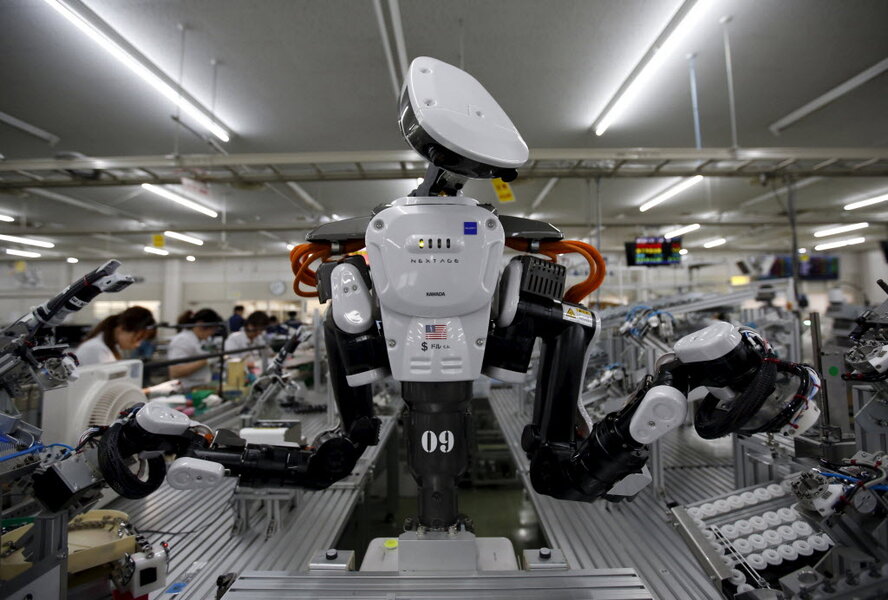Why quality jobs are ahead, not behind
Loading...
One of the Monitor’s regular readers, a woman in her mid-90s, uses a desktop computer, an iPad, and a smartphone. Yet as a young child in the 1920s, her family’s rural home had no electricity, no refrigerator, no radio, and definitely no TV. Back then her parents’ car, which replaced a horse and buggy, was not driven in the winter because of muddy roads. Snowplow trucks had not been invented.
What is remarkable about this tech-savvy woman is her lifelong lack of fear to adapt to new devices. Many seniors have become accustomed to the frequent public debates over the effects of automation on jobs and other aspects of life. (Congress held a hearing on the topic – again – last spring. The first one was in 1955.) These elders know that new technologies, while possibly disruptive, also bring opportunities for new types of work and social interaction.
They’ve also learned what it takes to adapt: a curiosity and humility to learn new skills, a flexibility to move, and a confidence that humans will always be able to do something that robots and other machines cannot. These qualities can help individuals overcome a fear of adapting to the rapid pace of digital change.
These are lessons for President-elect Donald Trump as he tries to “bring back” the quality jobs that he says were lost to free trade and globalization. Economists say that automation – which is driven by companies seeking efficiency from global competition – is the main reason so many tech jobs of the 20th century have been lost. The real task is to assist people in adapting to the benefits of new technologies. “A free people must strive to govern its technologies and not passively be governed by them,” states Adam Keiper, a fellow at the Ethics & Public Policy Center in Washington.
Still, says Mr. Keiper, today’s automation is different in two aspects. One is that many jobs that rely on high-level thinking could be handed off to artificial intelligence. And two, robotic machines, such as driverless cars, will be doing more to navigate and manipulate the physical world.
“The job market will change, but in something like the way it has changed over the last half-century: some kinds of jobs will disappear, but new kinds of jobs will be created, and by and large people will be able to adapt to the shifting demands on them while enjoying the great benefits that automation makes possible,” he stated.
The first task is to deal with the fear of being dislocated by automation. In his latest book, titled “Thank You for Being Late,” New York Times columnist Thomas Friedman looked at the fast pace of change and all the confusion among workers reflected in the 2016 presidential campaign. He recalled the words of scientist Marie Curie: “Nothing in life is to be feared, it is only to be understood. Now is the time to understand more, so that we may fear less.”
Many workers laid off by automation have re-tooled themselves for the new technologies. Still, schools and governments can do more to help people adjust to the need for transferable skills that apply to emerging types of automation. An estimated 65 percent of kids entering school today will have job types that don’t yet exist. What they, like the rest of us, can learn is how our elders learned long ago to be wise in adapting to new technologies.





